The Lost Caverns of Ixalan Mechanics
Once you've been to the golden city of Orazca, there really is nowhere to go but down. So, down it is. Deep below the surface of Ixalan lies an ancient network of caves. At its center, Chimil, the life-giving god-star, but don't underestimate the dangers and wonders along the way. This article reviews the new and returning mechanics you'll encounter in The Lost Caverns of Ixalan. Let's get spelunking!
Craft
The new ability craft focuses on two of the better parts of exploration: finding cool stuff and then building better stuff from the cool stuff you found. Each card with craft is a transforming double-faced card.
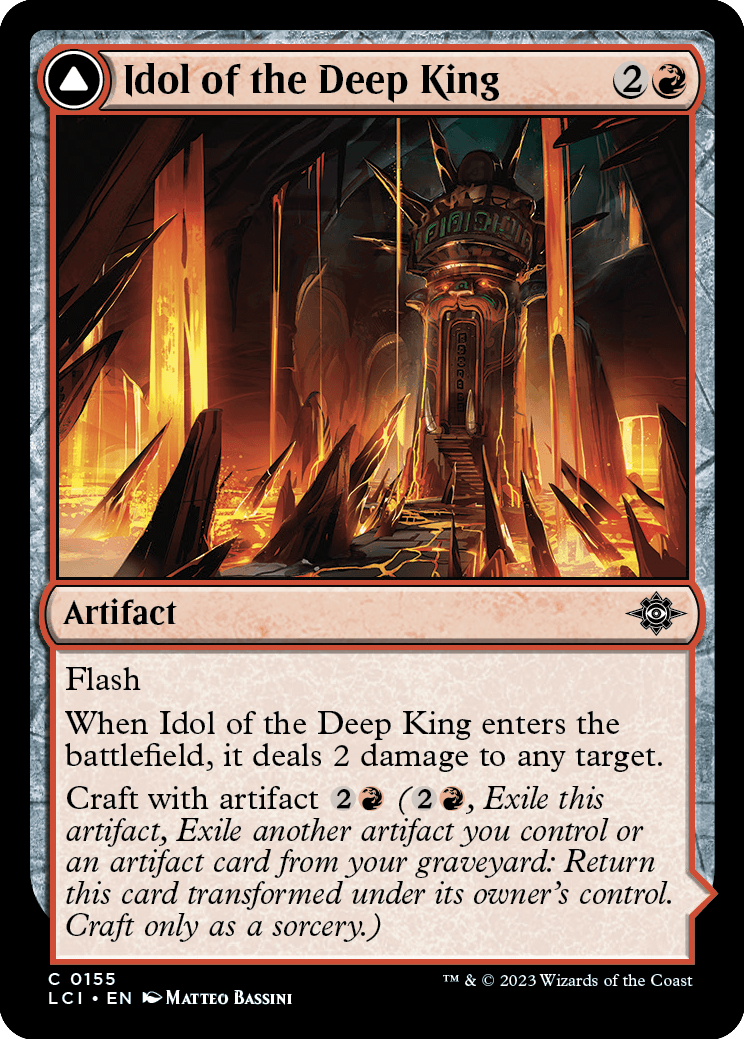
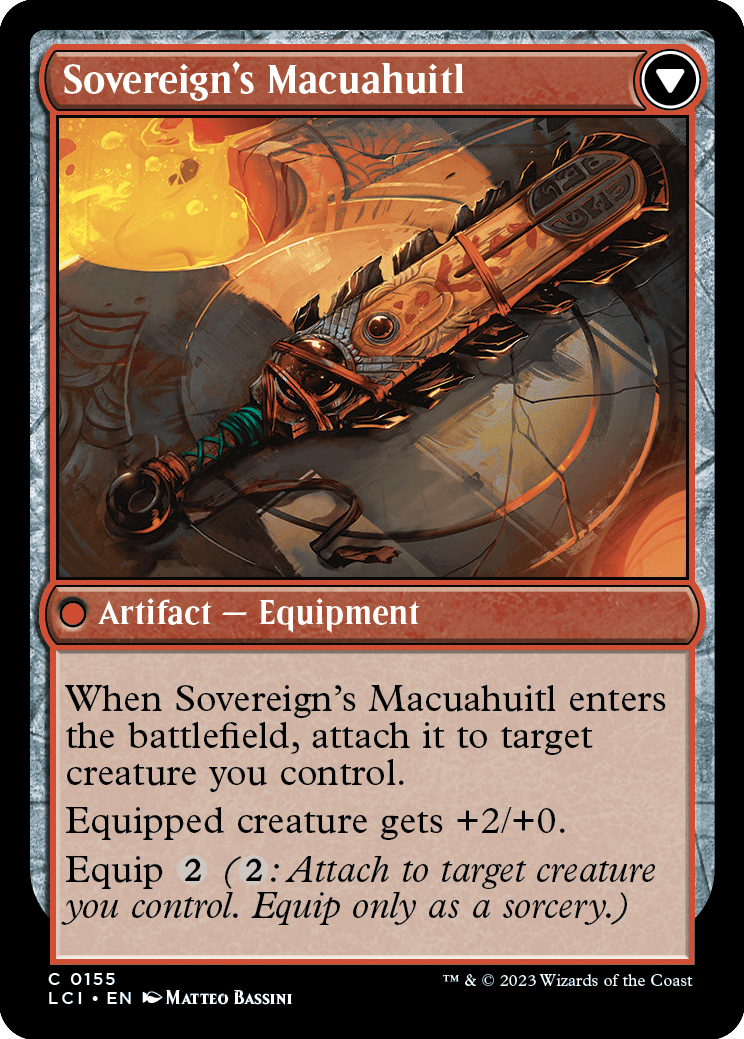
As with previous transforming double-faced cards, you always cast the front face of these cards (that's the face with the craft ability), and they always enter with that face up unless something specifically says they enter transformed, such as the craft ability. And the front faces are great. Perfectly cromulent finds. But what if we could craft something better?
Craft is an activated ability that lets you take the mundane and make it magnificent. (Please don't tell the Deep King I called his idol mundane.) To activate a craft ability, you need to do three things: exile the permanent with craft, exile the specified materials, and pay some mana. The materials are other permanents you control and/or cards from your graveyard and are described in the craft ability itself—for example, "craft with artifact" means exile an artifact you control other than the permanent with craft or exile an artifact card from your graveyard. As the craft ability resolves, the card with craft will return to the battlefield transformed under its owner's control. I hope that's you, and that you now control something even better than you did before!
If a craft ability requires multiple materials, you can exile some from among permanents you control and the rest from among cards in your graveyard. For example, say you come across The Enigma Jewel in your travels. Chimil smiles upon you, friend.
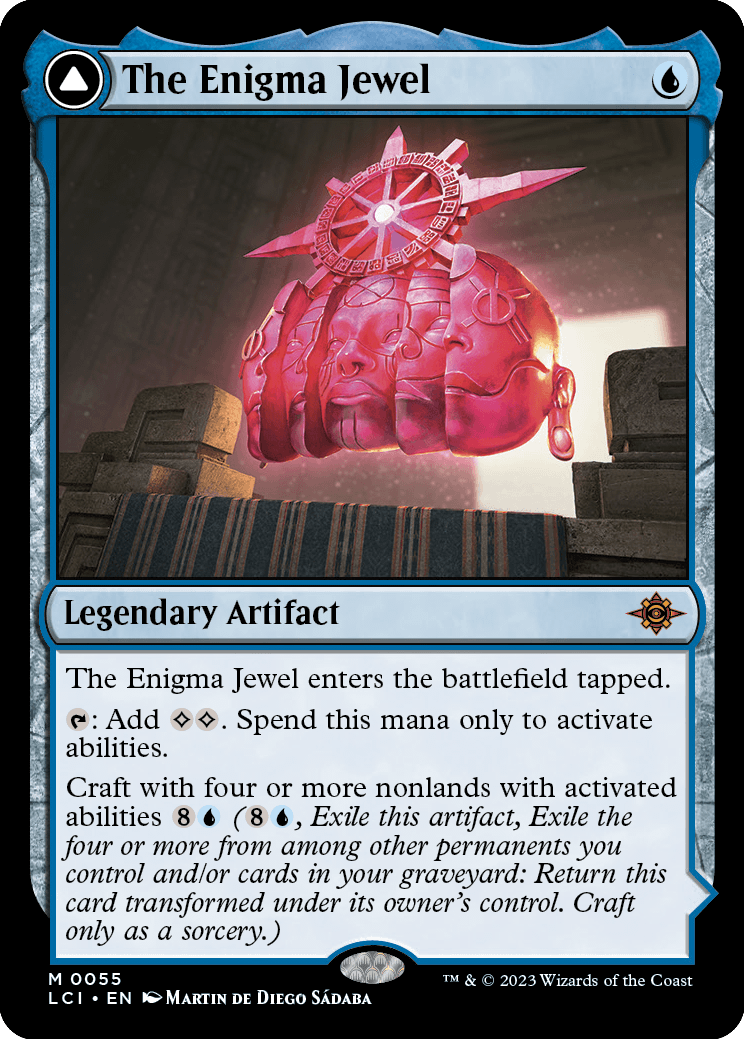
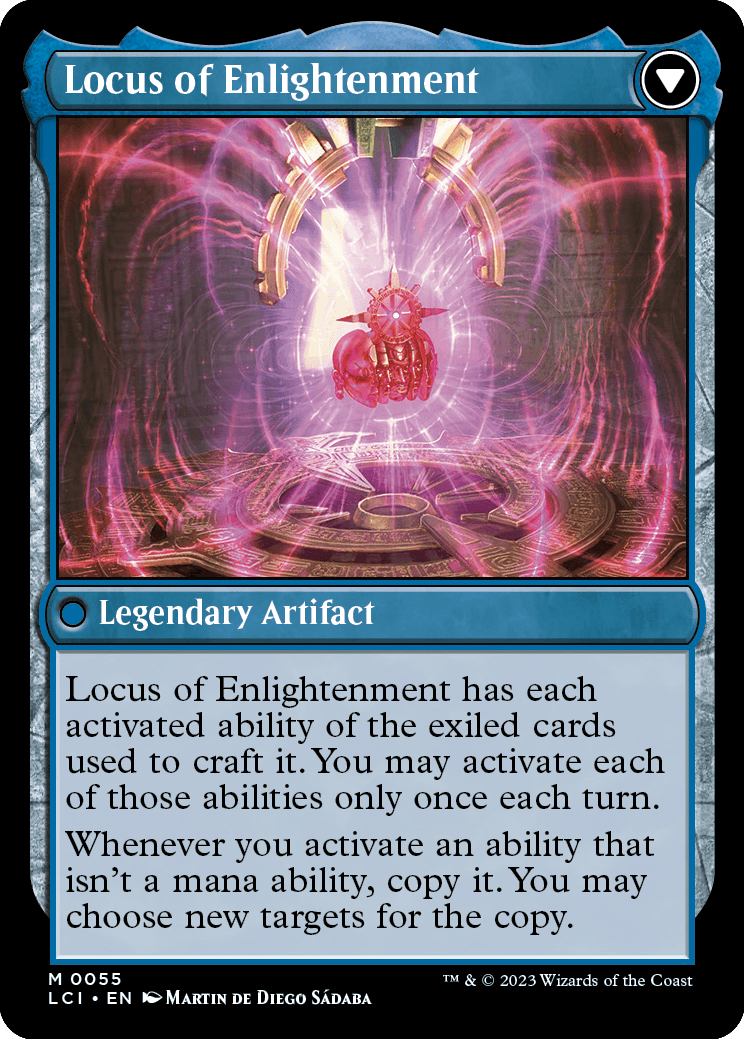
The required materials are four or more nonlands with activated abilities, but you have options. You could exile four nonland permanents you control with activated abilities. You exile two such permanents you control and two nonland cards from your graveyard with activated abilities. You could exile four nonland cards from your graveyard with activated abilities. Or one and three. Or one and four! Or two and five. "Or more," you know?
If you're exiling permanents you control to craft, keep in mind that you can exile tokens, but be careful. Sometimes the back faces will have abilities that refer to the "exiled cards used to craft" those faces. Once you exile a token, it ceases to exist, so any ability looking for a card in exile won't see tokens that aren't there. Sacrificing tokens may make your passage to the Locus of Enlightenment easier, but it will have fewer abilities once you get there. You'll have to determine for yourself where the balance lies.
Transforming Double-Faced Cards
The Lost Caverns of Ixalan features other transforming double-faced cards in addition to those with craft. Many of these transform in more traditional ways, not leaving the battlefield and returning but rather just turning from front face to back face. If you know how transforming double-faced cards work, don't be flummoxed—you're prepared for the new crop of awesomeness. If not, a refresher awaits!
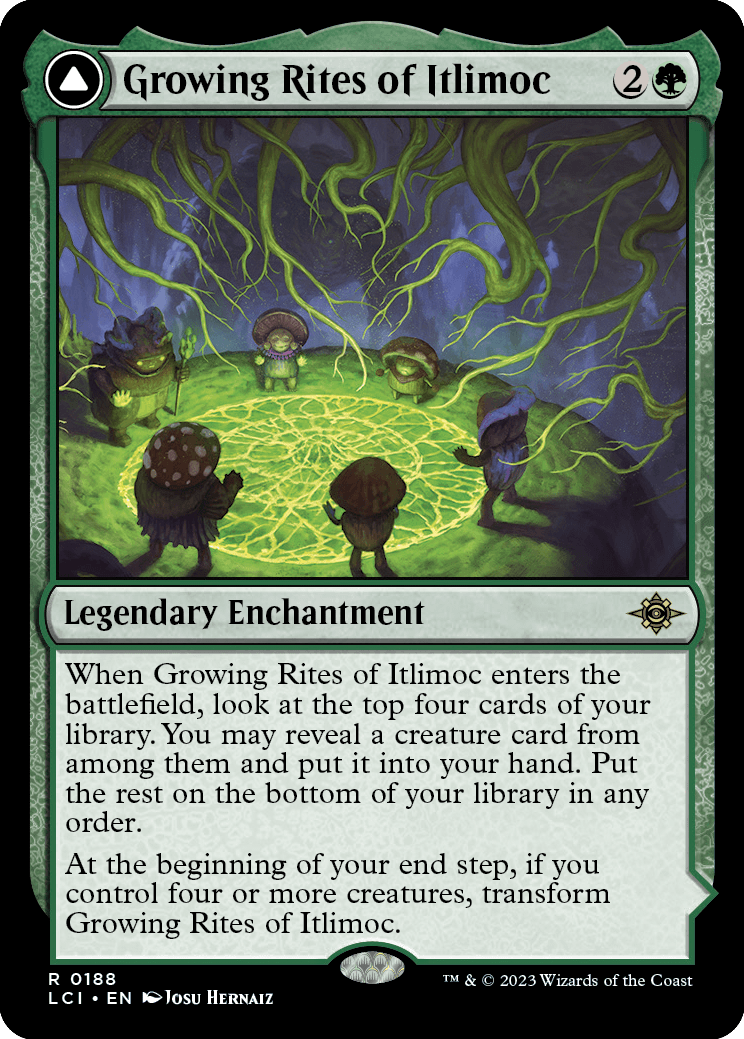
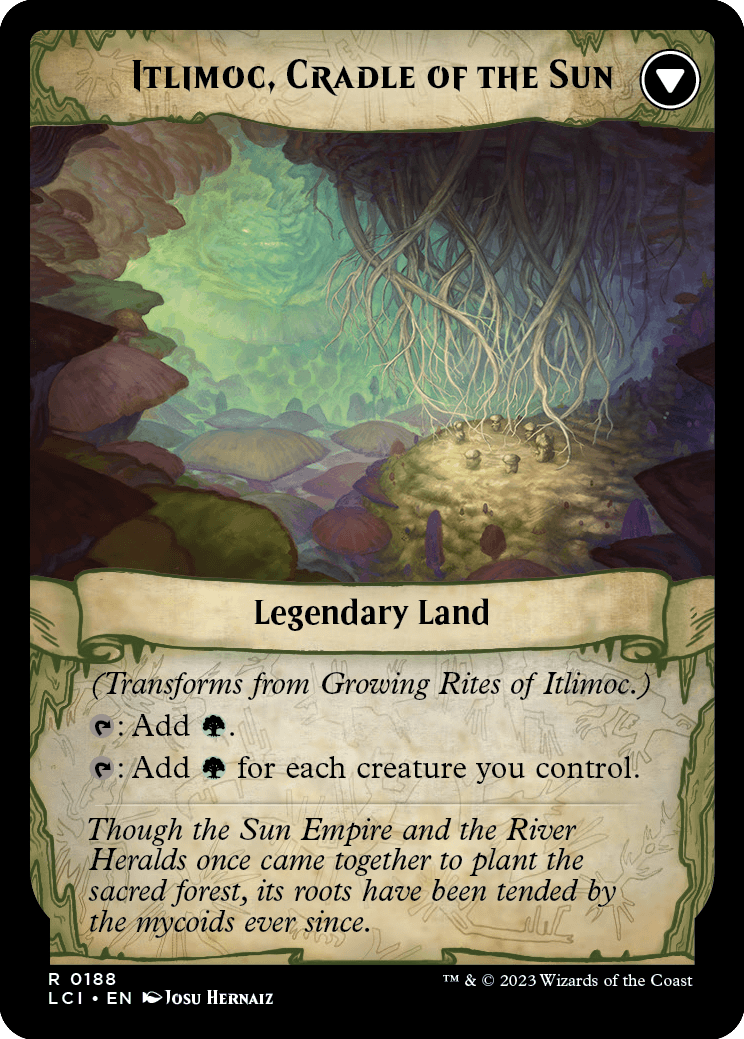
The front face is marked with an upward-pointing triangle icon in its upper-left corner. The back face is marked with a downward-pointing triangle icon in its upper-right corner. Whichever face is up tells you what the permanent is and what it can do. If you're told to transform a permanent, turn it over to its other face. Transforming a permanent doesn't cause it to become tapped or untapped. So, if you transform a tapped creature, the resulting permanent will still be tapped.
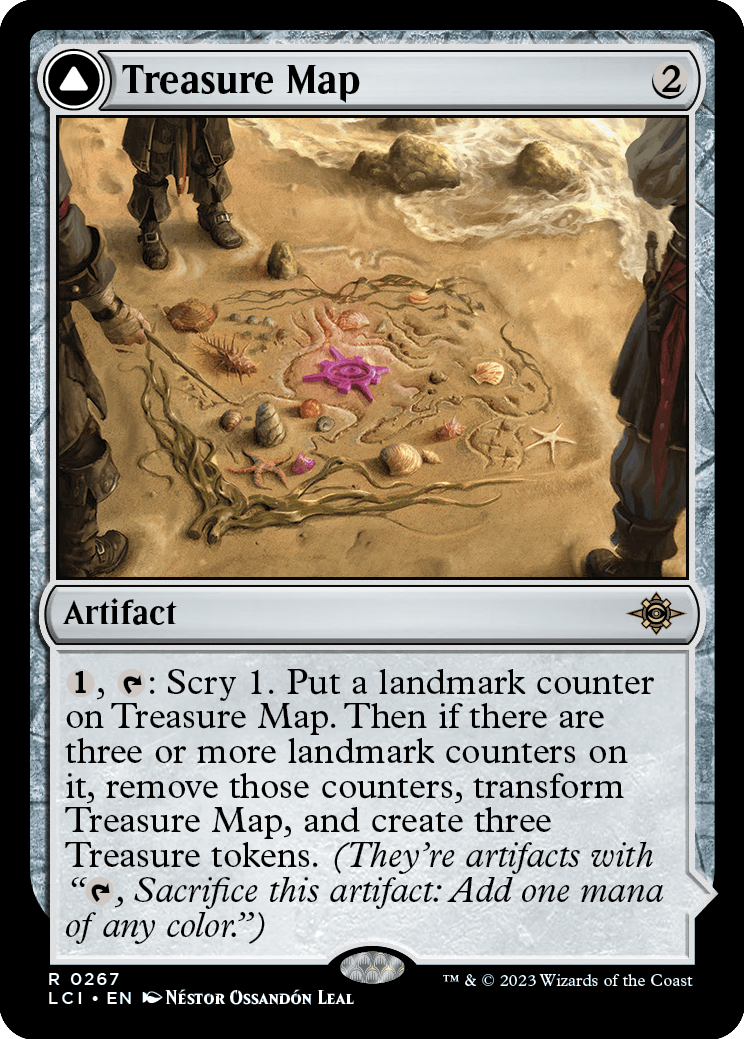

For back faces that are lands, the map-inspired frame that debuted in the original Ixalan returns. Transforming a permanent into a land isn't the same thing as playing a land. Treasure Cove doesn't enter the battlefield, and transforming Treasure Map into Treasure Cove doesn't count as your land play for the turn.
If a transforming double-faced card isn't on the battlefield, it has only the characteristics of its front face. So, if a spell lets you search your library for a land card, you couldn't find Treasure Map, but if you're searching your library for an artifact card, you could. While one is on the battlefield, use the characteristics of whichever face is up with one exception: if the back face is up, you still use the front face's mana cost to determine the back face's mana value.
Descended
Onward toward Chimil we go! Several cards in this set have abilities that check if you've descended this turn. You've descended if a permanent card has been put into your graveyard from anywhere.
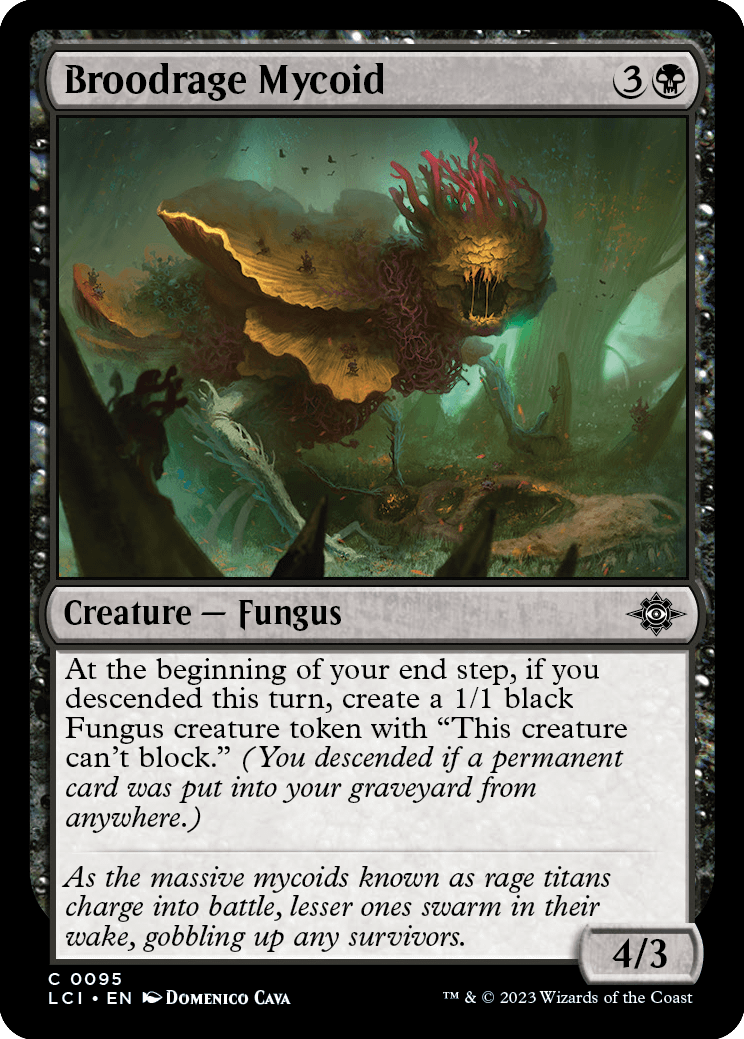
Abilities like the one our little mushroom friend has check to see if you've descended that turn to determine whether they trigger. For those abilities, it doesn't matter how many times you've descended that turn, only that you've done so at least once. It also doesn't matter that the permanent card is still in your graveyard. If a permanent card is put into your graveyard and then you return it to your hand, for example, you've descended that turn.
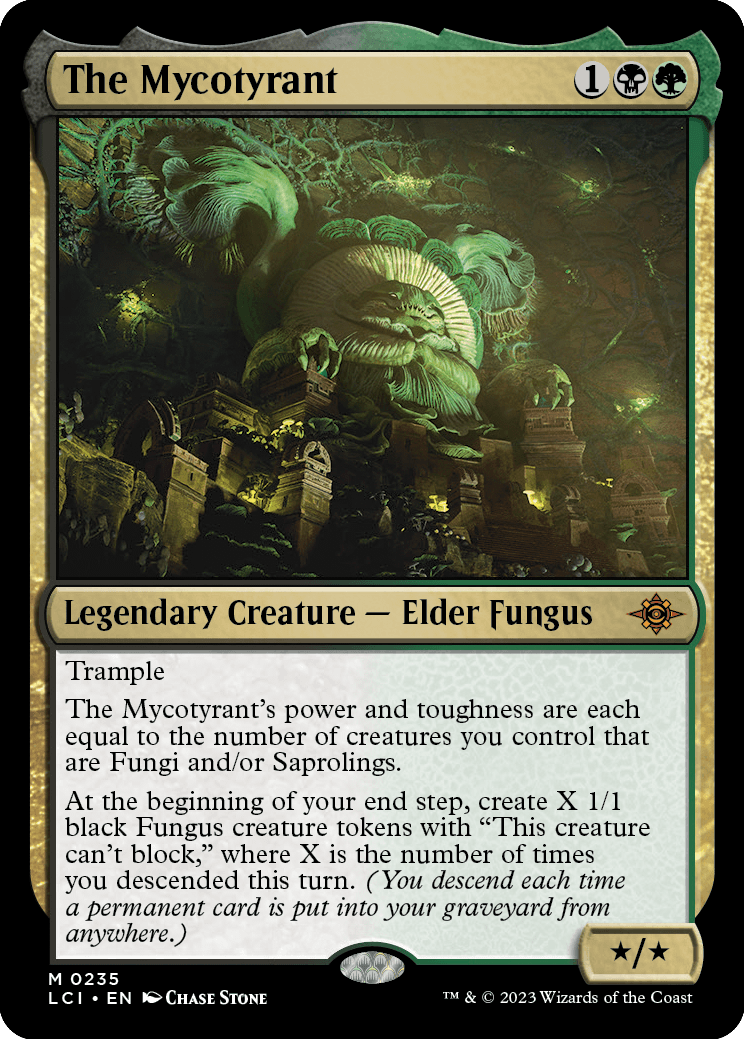
Our big mushroom friend's ability counts how many times you've descended that turn, meaning how many permanent cards have been put into your graveyard from anywhere during the turn. Again, those cards need not still be in your graveyard.
Remember that in all cases, descending refers to permanent cards only, so instant and sorcery cards don't count.
Descend 4, Descend 8, and Fathomless Descent
Closely connected to descending are three ability words used to highlight abilities that all care about the number of permanent cards in your graveyard. How serendipitous!
Descend 4 and descend 8 abilities care about there being at least four or eight permanent cards in your graveyard, respectively. Again, instant and sorcery cards don't count. Each descend 4 and descend 8 ability is different and the bonus for achieving the desired haul in your graveyard changes from card to card.
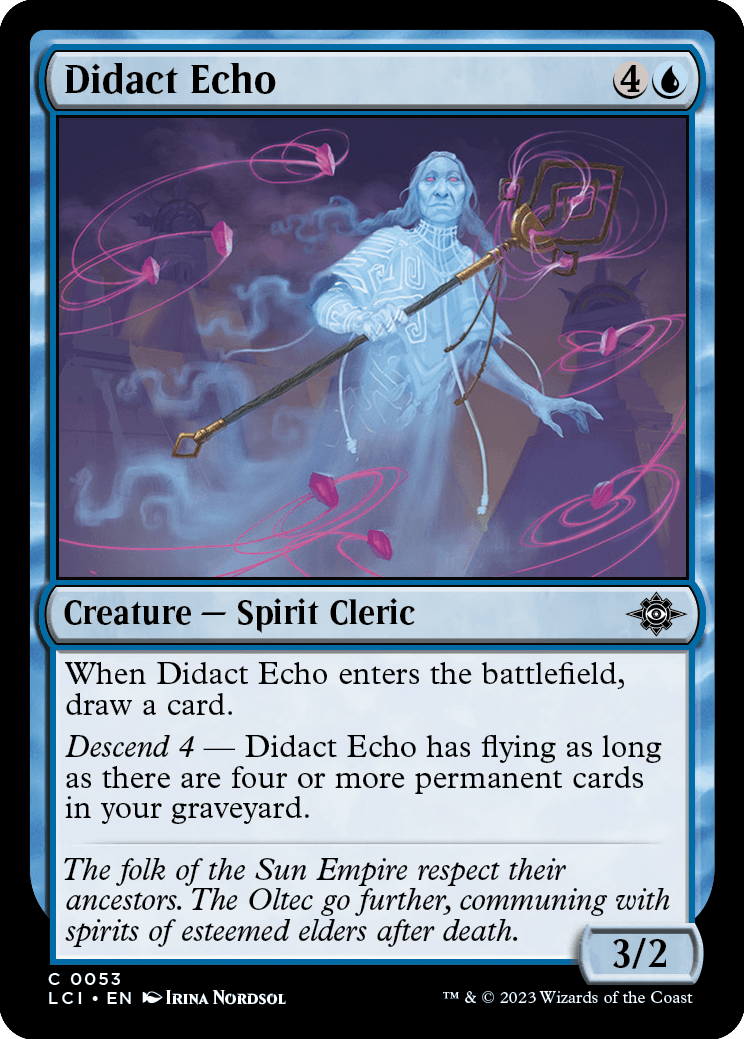
Fathomless descent abilities are very similar, but rather than specifying a required minimum number of permanent cards in your graveyard, they just get more powerful the more you have. Fill your graveyard with reckless abandon and reap the rewards.

Discover
The new keyword action discover lets you delve (not that delve) deep into your library and explore (not that explore) for a spell unknown! You never know what you'll unearth (not that unearth)!
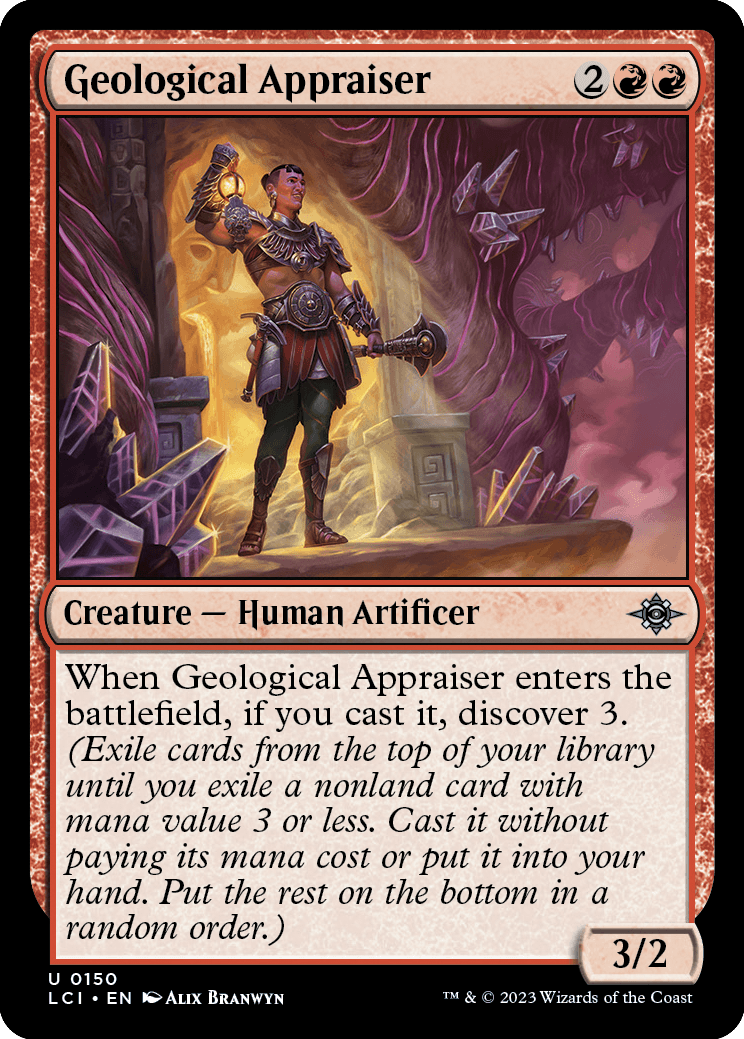
Discover always comes with a number, and that number tells you the mana value you're limited to. When told to discover, exile cards from your library one at a time until you exile a nonland card with that mana value or less. You then have a choice. You can either cast that card without paying its mana cost or you can put it into your hand. All the other cards you exiled, including the land cards, are then put on the bottom of your library in a random order.
In some less common cases, the spell you may want to cast because of discover may have a different mana value than the card you exiled. Remember that the spell must also have a mana value equal to or less than the discover number. For example, say you discover 3 and exile
Explore (Yes, That Explore) and Map Tokens
There are beautiful new lands to seek out and hardy creatures raring to go, so let's look at the returning mechanic explore.
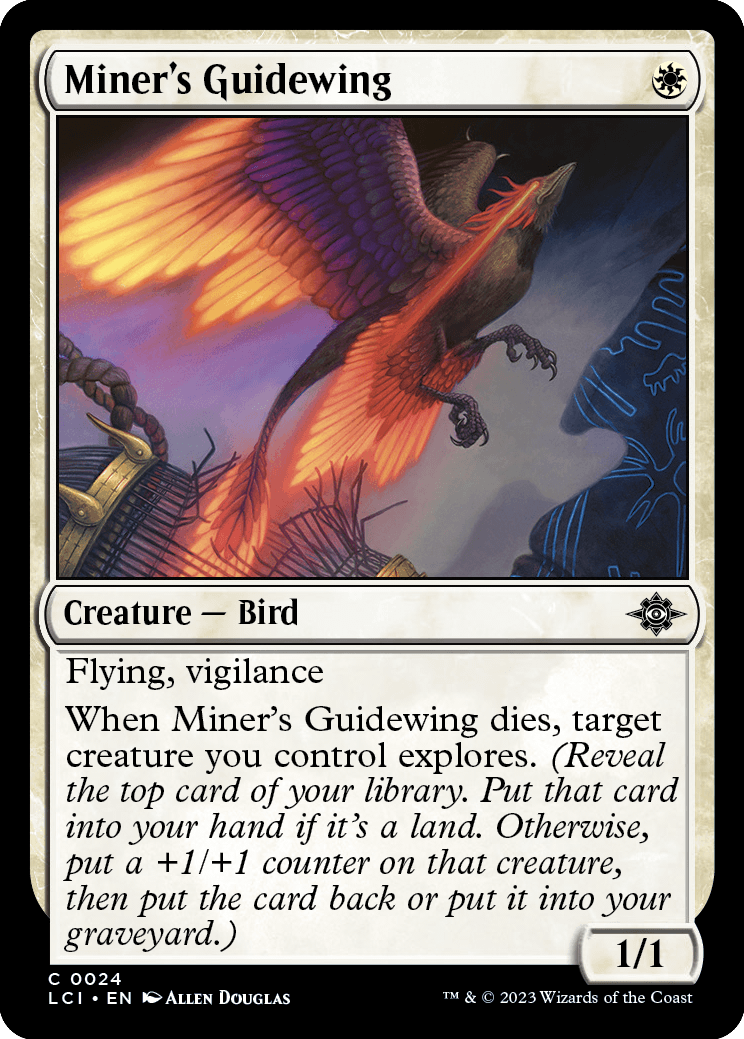
If a creature you control explores, reveal the top card of your library. If the revealed card is a land card, signifying they found some new territory you can check out, put that card into your hand. If it's not a land card, your creature won't find any cards for you, but they will be fortified by the experience. You put a +1/+1 counter on that creature. Then you can put the nonland card into your graveyard or, if you like what you saw, leave it on top of your library.
One prevalent way that creatures explore in this set is by using Map tokens, a new kind of predefined token. Map tokens are colorless Map artifact tokens with the ability "{1}, {T}, Sacrifice this artifact: Target creature you control explores. Activate only as a sorcery."
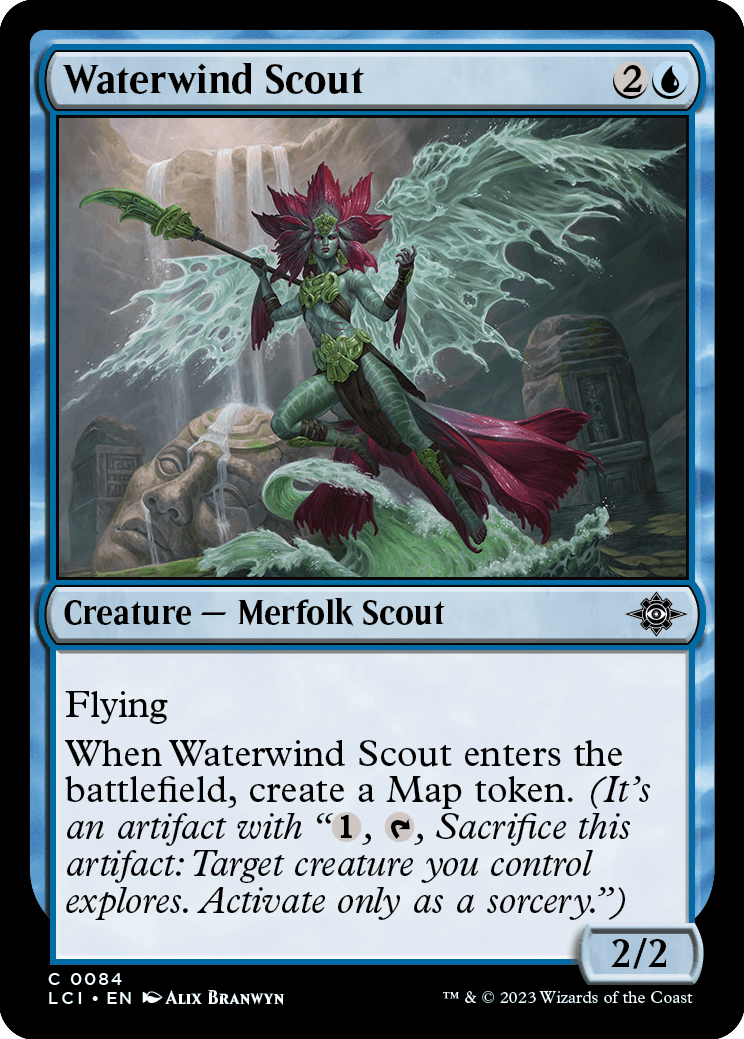
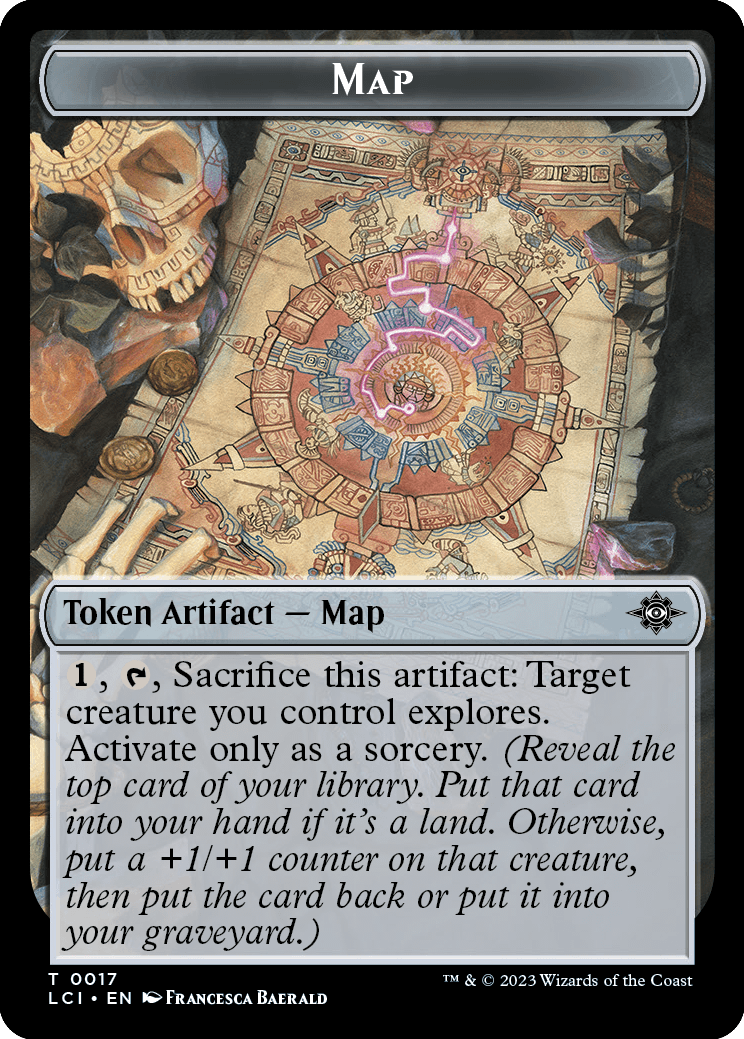
A few creatures explore because of an activated or triggered ability that doesn't target the creature. If a creature that's no longer on the battlefield is instructed to explore, it can, as long as the spell or ability doing that resolves. Exploring even after they maybe died? Adventurers, uh, find a way. You might get a land card, and if you reveal a nonland card, the now departed creature won't get the +1/+1 counter, but you'll still have the option to leave it on top of your library or put it into your graveyard.
Finality Counters
This last one is less of a new mechanic and more of a new technology to express an existing ability. Some cards return a card to the battlefield, usually a creature card, for one last chance at life. But if it would die, it's exiled instead of going to the graveyard. Starting with this set, this functionality will be expressed using finality counters.

You'll see finality counters popping up in most sets, but not in large numbers. It's not really something you'll build a deck around … or will you? Oh, now that I've said that … Okay, you should know that the functionality travels with the counter, so if you find a way to put the counter on an opponent's creature and that creature would die, it'll be exiled instead. I've said too much, haven't I?
Preorder Now
The Lost Caverns of Ixalan releases November 17, 2023, and you can preorder products today from your local game store, online retailers like Amazon, and elsewhere Magic is sold. If you want more information on where you can find these cards and all the Booster Fun variant treatments available, read our guide to Collecting The Lost Caverns of Ixalan.



